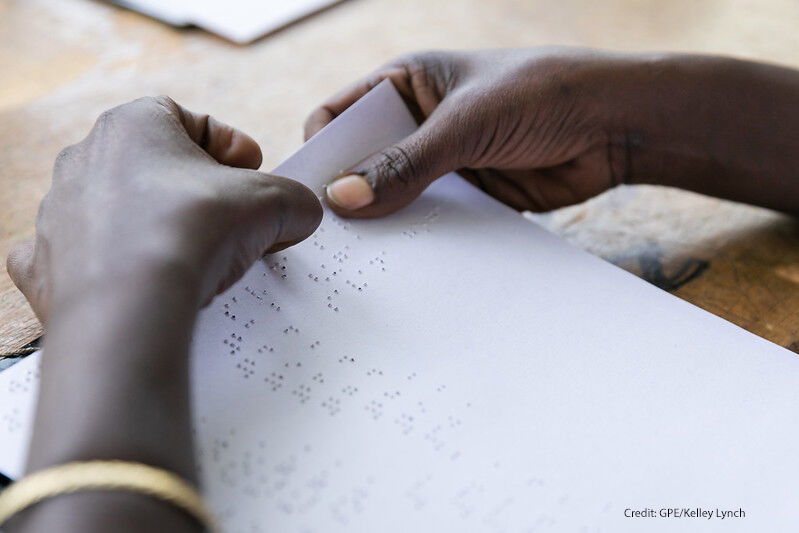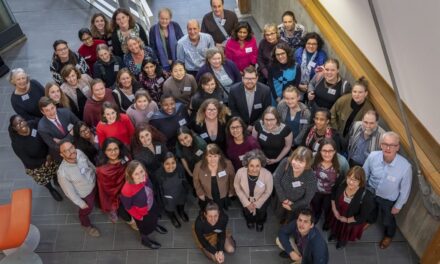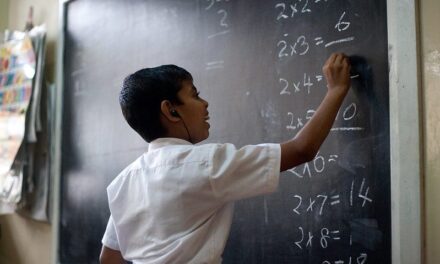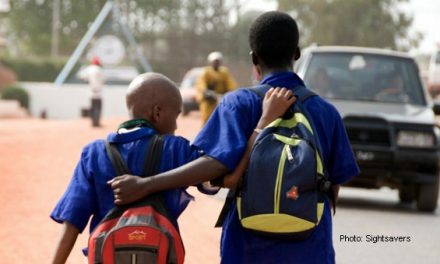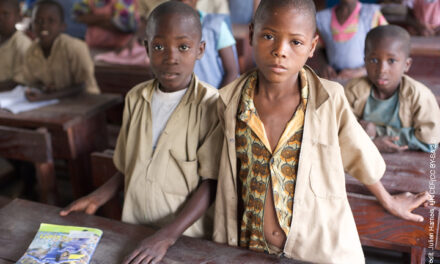This blog was written by Professor Nidhi Singal and Dr Laraib Niaz, Research for Equitable Access and Learning (REAL) Centre at the University of Cambridge. It was originally published on the Inclusive Education Initiative website on 24 July 2023.
Krishna is 17 years old and is deaf. Since the past three years, she has been learning how to sew through vocational training sessions conducted by Voluntary Service Overseas (VSO) Nepal as a part of their Girls’ Education Challenge project. Describing her journey, Krishna expressed delight over the usefulness of acquiring a skill that could be channelled into becoming financially independent. Krishna passionately articulated on how ‘success’ for her would entail owning her own tailoring business in the future.
Aspirations, hopes and dreams for the future can be important predictors for achieving financial and other success in adulthood. For girls with disabilities, socially constructed beliefs on gender and disabilities may negatively impact attributes such as self-efficacy, aspirations for the future and conceptualisations of success. Yet, few studies have explored the aspirations of girls with disabilities themselves.
Even with growing global recognition of marginalisation faced by girls with disabilities, there remains limited research on their educational needs and how educational interventions can influence their life trajectories. A recent study evaluating the effectiveness of the Girls’ Education Challenge (GEC), which operates 41 educational projects across 17 countries in the Global South, found a rise in the hopes and aspirations of girls with disabilities for their future, resulting from participation in the interventions. In this blog, drawing on data generated during focus group discussions with girls with disabilities in two districts each in Nepal (Parsa, Banke), Malawi (Dedza, Mchinji), and Uganda (Kampala, Wakiso) we examine how 10-19 year-old girls with disabilities, currently enrolled in secondary schools, perceived “success”.
Research teams in each of the three countries conducted six focus group discussions consisting of 8-10 girls with and without disabilities. Within each focus group discussion, the girls were divided into two groups and were provided with flipchart paper with a (large scale) human figure drawn on it and coloured pens. Braille materials were provided and a Braille expert was present to assist girls with visual impairments, and sign language experts were available for girls with hearing impairments. The girls were then asked to describe and develop the human figure into a “successful woman”. We asked them to first focus on a what a successful woman with disabilities looks like and then discuss what a successful woman without disabilities looks like. Across the focus-group discussions, what emerged was a common understanding of successful women, which was very succinctly noted by one of the Nepalese participants:
“You may find a person who is disabled but successful… there will be no difference between the successful woman with disability and without” (Girl with disability, Nepal).
Both girls with and without disabilities unequivocally expressed how possibilities for women with disabilities were endless and that both women with and without disabilities could be equally successful. In this blog we focus specifically on the common conceptualisations of ‘successful women with disabilities’, which emerged across all three contexts.
Personal characteristics
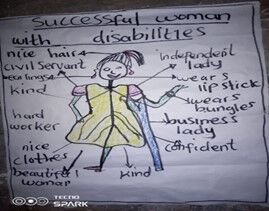 One of the distinguishing attributes of a successful woman with disabilities was seen as how she dressed, with the girls particularly appreciating her being neat and looking pretty. When drawing the figure on the flipchart, girls in all 18 focus group discussions stressed how she would be well dressed and: “beautiful” (Girl with disability, Nepal).
One of the distinguishing attributes of a successful woman with disabilities was seen as how she dressed, with the girls particularly appreciating her being neat and looking pretty. When drawing the figure on the flipchart, girls in all 18 focus group discussions stressed how she would be well dressed and: “beautiful” (Girl with disability, Nepal).
In Malawi, in three of the groups, both girls with and without disabilities particularly stressed the importance of owning expensive clothes and accessories for a successful woman with disabilities: “She wears expensive clothes like dresses, wrappers, expensive shoes such as Timberland and frequently changes hair dressing. She also wears expensive make-up” (Girl with disability, Malawi). Three of the girls also stated how they aspired to look like the successful woman in the future: “because she wore make-up and looked pretty. I want to look like her” (Girl with disability, Malawi).
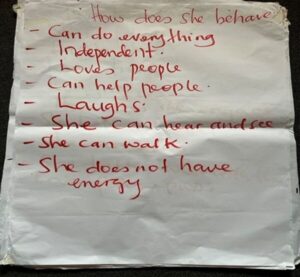 In addition to appearance, the girls discussed certain behavioural attributes of the successful women with disabilities. In 12 out of 18 focus group discussions, kindness was highlighted as an important quality: “she is kind to everyone” (Girl without disability, Uganda). In addition, in five groups, important attributes were seen as ease of communication with other people: “she interacts freely with people, she does not quarrel with them” (Girl with disability, Malawi) and ability to be respectful “she speaks nicely and sweetly, she respects elder and loves the younger” (Girl with disability, Nepal).
In addition to appearance, the girls discussed certain behavioural attributes of the successful women with disabilities. In 12 out of 18 focus group discussions, kindness was highlighted as an important quality: “she is kind to everyone” (Girl without disability, Uganda). In addition, in five groups, important attributes were seen as ease of communication with other people: “she interacts freely with people, she does not quarrel with them” (Girl with disability, Malawi) and ability to be respectful “she speaks nicely and sweetly, she respects elder and loves the younger” (Girl with disability, Nepal).
What was also emphasised in seven of the focus group discussions was generosity of the successful woman towards family and friends: “she gives something, whether food or money, she takes and gives out to a friend who is in need of help” (Girl with disability, Malawi) and community members: “She helps the poor… Whenever people are in trouble in the village, she helps” (Girl without disability, Malawi). Both physical beauty and positive behavioural attributes were therefore seen as essential in successful women with disabilities.
Career prospects and financial independence
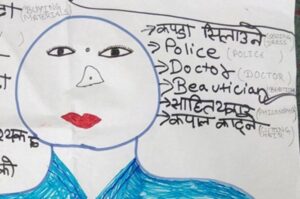 In all focus group discussions, successful women with disabilities were those with stable jobs and financial independence. The latter was revered, particularly for those girls who were already earning following vocational training courses in Nepal and Uganda. Girls also displayed admiration for successful women in a position of power, suggesting a range of possible and varied professions such as teaching, beauty parlour work, farming, healthcare, engineering, fashion designing as something successful women undertake. In four of the groups in Nepal, girls stressed the importance of the successful woman working towards the betterment of wider society. For instance, one girl mentioned how the successful woman: “does nurse work. She takes care of patients, helps people” (Girl with disability, Nepal) and another said the successful woman: “is a police officer, she protects the country” (Girl with disability, Nepal) while another girl mentioned how “she has a civil service job” (Girl without disability, Nepal).
In all focus group discussions, successful women with disabilities were those with stable jobs and financial independence. The latter was revered, particularly for those girls who were already earning following vocational training courses in Nepal and Uganda. Girls also displayed admiration for successful women in a position of power, suggesting a range of possible and varied professions such as teaching, beauty parlour work, farming, healthcare, engineering, fashion designing as something successful women undertake. In four of the groups in Nepal, girls stressed the importance of the successful woman working towards the betterment of wider society. For instance, one girl mentioned how the successful woman: “does nurse work. She takes care of patients, helps people” (Girl with disability, Nepal) and another said the successful woman: “is a police officer, she protects the country” (Girl with disability, Nepal) while another girl mentioned how “she has a civil service job” (Girl without disability, Nepal).
Being hardworking and excelling in their chosen profession was something equally admired by girls in six of the groups across the three countries: “she leads on everything even if she doesn’t know how to do it… she works harder than others” (Girl with disability, Malawi).
Overarchingly, the pivotal role of earning income was central to being ‘successful’: “as long as she makes a lot of money, she is successful” (Girl with disability, Nepal). An important result of this success would then be the ability to own assets: “she bought a beautiful house. And inside the house there are different home equipment like TV, chairs” (Girl with disability, Malawi), as well as “Having many cars and building good houses” (Girl without disability, Malawi). Material comfort, an income through a respectable job were thus valued as important markers of success.
Importance of relationships
While all girls unanimously stated that the successful woman would be working and earning, importance of relationships emerged in some, while marriage raised significant questions.
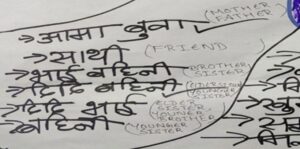 Even though half of the girls believed a woman could be successful without the support of a partner, they did highlight the need for supportive relationships, particularly with parents and siblings, to overcome any challenges and succeed in life: “You may find she has friends who helped her for her success” (Girl without disability, Uganda), “her siblings might be her friends and so they help her” (Girl with disability, Uganda).
Even though half of the girls believed a woman could be successful without the support of a partner, they did highlight the need for supportive relationships, particularly with parents and siblings, to overcome any challenges and succeed in life: “You may find she has friends who helped her for her success” (Girl without disability, Uganda), “her siblings might be her friends and so they help her” (Girl with disability, Uganda).
Even though supportive relationships were valued for a successful woman with disabilities, in eight groups, girls with and without disabilities said that the successful woman would not be married or married at a more advanced age: “she was old so when you are old you make your own choices. when a woman grows up, she makes her choice of a man to get” (Girl with disability, Uganda). Interestingly, around seven girls with disabilities in Malawi and Nepal stated how the successful woman should get married in their 30s: “at least 30 plus. 38 to be specific” (Girl with disability, Malawi). Responses to number of children also varied. In eight groups, children were seen as possible barriers to success: “If children are many, the woman cannot be successful because she will be asking for money so as to support her children” (Girl without disability, Malawi).
Conclusion
Overall, success for both girls with and without disabilities encompassed not just financial independence and accumulation of material wealth but also personal characteristics such as kindness and human connection. Importantly, the girls highlighted the crucial role of education in overcoming the barriers faced by women with disabilities: “a person with disabilities needs education…With education, she can sit and do anything. There is no need to go out and work and they can work from home as well” (Girl with disability, Malawi).
By imagining what a successful woman with disabilities looks like, girls with disabilities were able to highlight their own conceptualisations of success, articulate who they could be and wanted to be and imagine what they could achieve in the future. This view of the self was positively influenced through participation in different educational arrangements: “for me it was when the sirs came and talked about it, then I knew that the girls and women with disabilities have to get education and do some work” (Girl with disability, Nepal). The provision of support (inclusive teaching and learning resources, financial support, etc.) helped girls with disabilities have higher aspirations for the future: “helped children to make sure they are learning, when we come to learn they ask us questions and we answer them and they thank us, this encourages us to continue learning… it helps in that you can be a leader in future” (Girl with disability, Uganda).
On the other hand, girls without disabilities showed a common and inclusive understanding of success by not differentiating between a successful woman with and without disabilities. They acknowledge the role of education in raising awareness on disability: “since I joined Crane, I have learned that even children with disability can do something for themselves and they treat them like any other child” (Girl without disability, Uganda). “If a girl is educated, it gives her confidence to make her own choices and help other people” (Girl with disability, Uganda).
Acknowledgements
The evaluation report was published through a partnership led by TetraTech International Development, with a consortium of research organisations including the REAL Centre at the University of Cambridge, Fab Inc. and Oxford Partnership for Education Research and Analysis.
The authors are grateful to the various partners and individuals who contributed to the wider research project. We would like to acknowledge the support of the project implementing partners: VSO Nepal, Link Education International Malawi and VIVA CRANE Uganda; field work manager, Julia Midland; local data collection partners Rooster Logic, Research Options, Research Plus in Nepal, Malawi and Uganda respectively; academic partners Institute for International Development Studies and Dr Niraj Poudiyal in Nepal, Centre for Social Research in Malawi and Ms. Jenipher Mbukwa in both Malawi and Uganda.
We are especially thankful to all the girls who so generously participated in the focus group discussions.
*All photos are from focus group discussions: 1. Dedza, Malawi, 2. Wakiso, Uganda and 3. and 4. Banke, Nepal.

